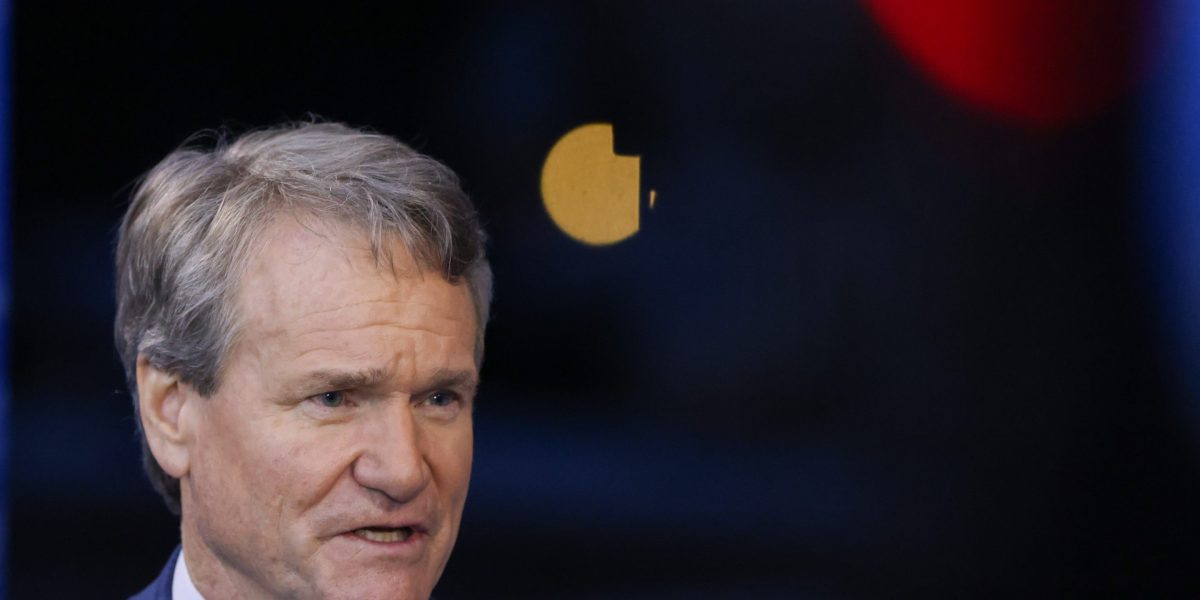Bank of America CEO says stretched consumers are turning into nation of bargain hunters and companies are cutting price to respond
The era of post-pandemic revenge spending is over, and that could spell the end of greedflation-driven corporate profits.


American consumers are in open revolt against corporate inflation, forcing companies to cut prices if they still want their business.
Speaking on Face the Nation on Sunday, Bank of America CEO Brian Moynihan warned that households continue to travel on vacation, go to the movies and dine out, but they are no longer willing to splurge now that their nest egg is shrinking. The post-pandemic revenge spending that turbocharged U.S. growth over the past two years has given way to a nation of coupon clippers.
“They’re basically finding bargains,” the CEO of the world’s second largest lender by market cap said in the interview. “And you’re seeing corporations cut price to respond to that.”
This suggests executives went too far hiking prices to pad their bottom line, a phenomenon known as “greedflation”. One recent study analyzing U.S. Commerce Department data found that corporate profits drove 53% of inflation during the second and third quarters of last year.
According to Moynihan, Bank of America’s 60 million retail customers are spending 3% more than they did this time last year, but that rate of growth represents half of what it once was following the pandemic.
Instead he said this figure is much more consistent with the pace seen during the Trump administration years prior to the outbreak of COVID. Despite the greedflation problem, many households have preserved purchasing power by shifting spare cash to interest bearing accounts that yield 5% in some cases.
“They’re still sitting with much more—even inflation-adjusted much more—in their account,” the Bank of America CEO said. “The problem is it started drifting down, which indicates that they’re using that money now to maintain a lifestyle.”
The bank could not be immediately reached by Fortune for further comment.
Once households go into hibernation, it’s hard to wake them up
With frustrated consumers sharing photos of their shopping bills online, brick-and-mortar retailers have been forced to react with promotions to maintain foot traffic.
Another joyful family trip to Costco!
This (plus the pack of paper towels in the bed) was only $655!
The average American family is doing just fine! pic.twitter.com/cuCEvoix3a
— Ethan (@EZebroni) August 9, 2024
Going into this season, for example, Walgreens launched a “Summer of Savings” that included price cuts on 1,300 items.
“Walgreens understands our customers are under financial strain and struggle to purchase everyday essentials,” it explained at the end of May, justifying the move.
But by following other peers, including Walmart and Target and even discounter Aldi, parent company Walgreens Boots Alliance ended up having to slash their full year earnings forecast just weeks later.
Management blamed this type of promotional activity for the downbeat outlook and predicted further headwinds would persist during its coming 2025 fiscal year. Its shares lost nearly a quarter of their value immediately following the profit warning, and are now trading at lows not seen since 1997.
Fast food restaurant chain McDonald’s likewise complained that price hikes on key menu items failed to offset a drop in consumer visits, leading to a slight decline in same store sales in its domestic U.S. market.
In his interview with Face the Nation, Moynihan stipulated his bank’s economists currently do not forecast a recession next year. Nonetheless he advised the Federal Reserve to begin easing off the brakes.
The Bank of America CEO anticipates a series of eight cuts through the end of 2026, half of which he sees coming next year. This would bring the fed funds rates down 2 percentage points to 3%-3.5%, he said, a rate he called normal in the new higher-for-longer environment.
Without an imminent signal from the Fed that relief is coming in the form of lower borrowing costs, he fears households could go into total hibernation.
“Once the American consumer really starts going very negative,” he said, “then it’s hard to get them back.”





